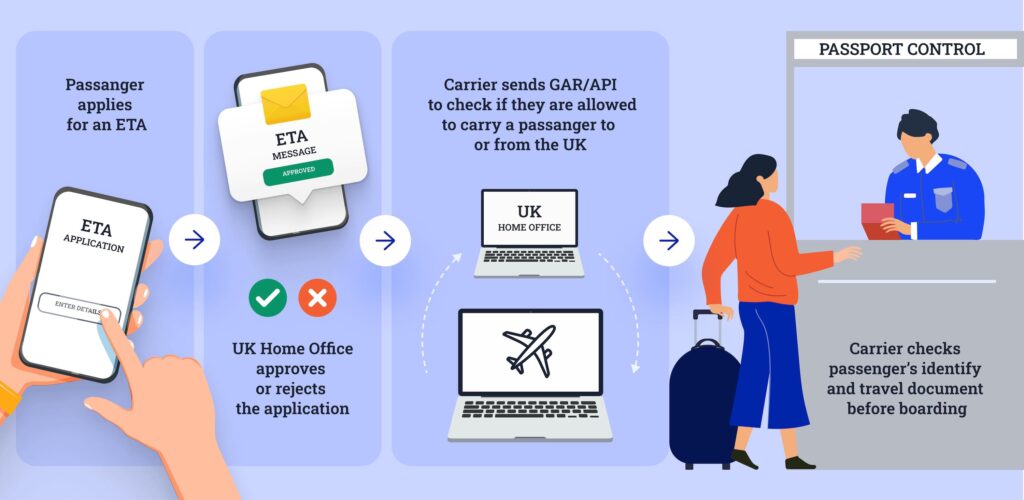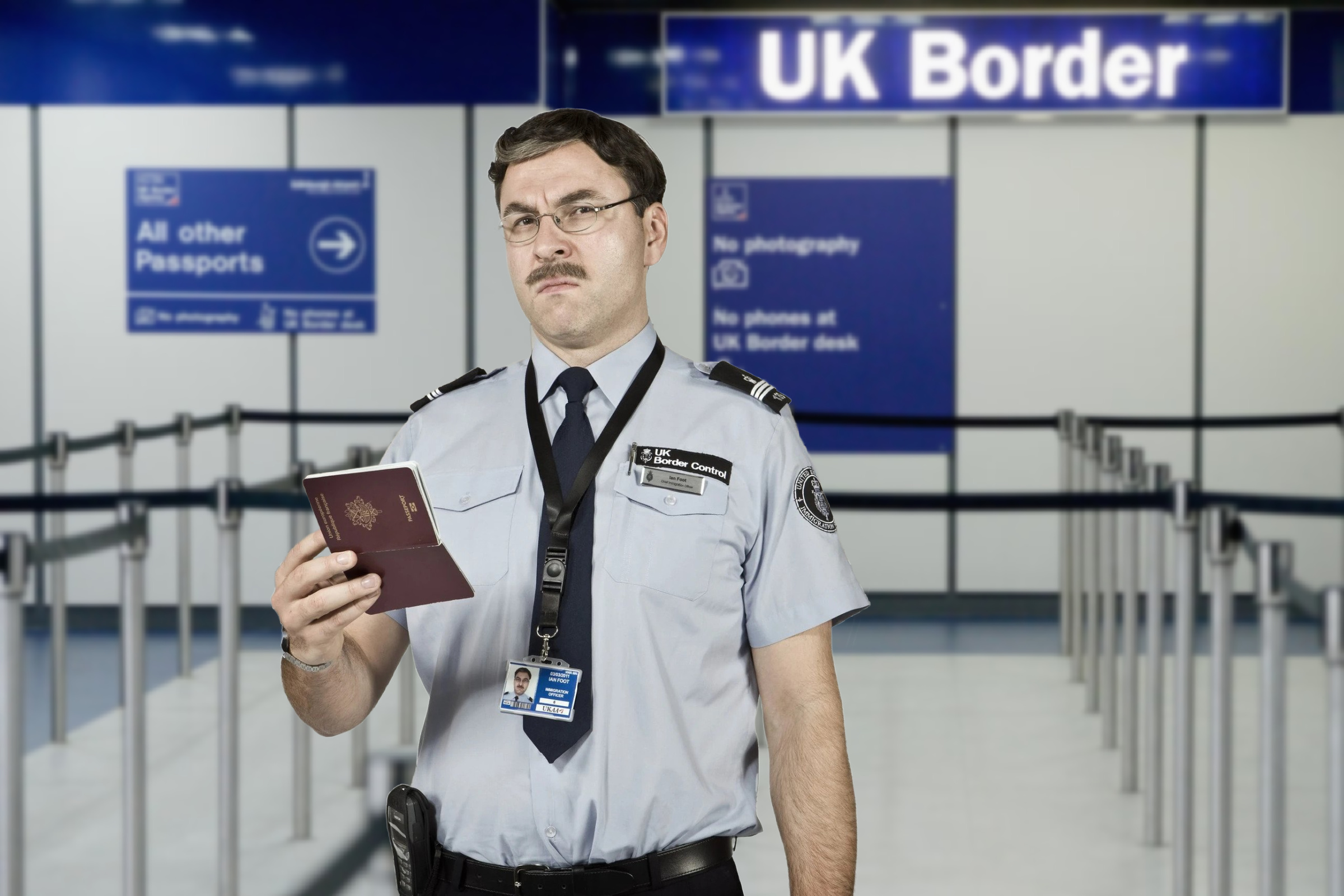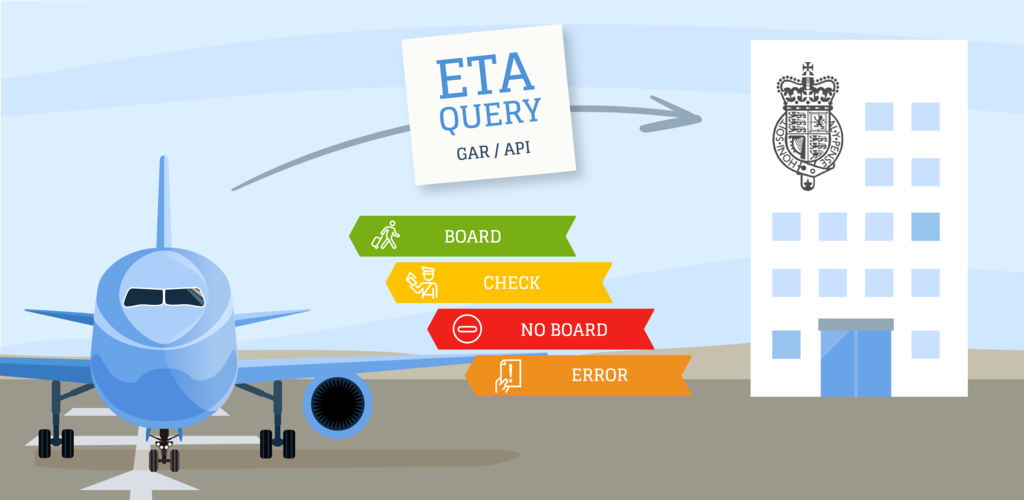Key Points
- The UK is bringing in an Electronic Travel Authorisation (ETA) scheme for passengers, which will be similar to the US ESTA program.
- It started in Nov 2023 for travellers from Qatar. It will then apply to travellers from more Gulf states from Feb 2024, and for more nationalities throughout 2024.
- Our friends at PnrGO put together this handy lowdown on what this new scheme will mean for operators headed to the UK. We saw it, we liked it, and so here it is for our OPSGROUP members!
The UK plans to fully implement its Universal Permission to Travel (UPT) scheme by 2025. In consequence, the first UK ETAs came into force on 15 November 2023. Under a new Carrier Liability Scheme, operators will be obliged to check immigration permissions for non-visa nationals (in addition to visa nationals). This will affect both GAR and API submissions.
With ESTA in the States, eTA in Canada, and ETIAS coming soon in the European Union, the introduction of Electronic Travel Authorisation in the United Kingdom comes as no surprise. What does ETA mean and how can carriers prepare for the upcoming changes?
Part of the bigger picture: Universal Permission to Travel
ETA is a digital record linked to a person’s passport (valid for 2 years, or less if the passport expires). It is being introduced as part of a broader scheme called Universal Permission to Travel. The general aim of UPT is to strengthen the UK border security by ensuring that all travellers have a valid travel permission in advance. The plan is for the majority of these permissions to become digital-only in the future (e.g. e-visas). This way, carriers will be able to check and confirm a passenger’s permission prior to travel. This will reduce the number of people denied entry at the border, and the associated detention and removal costs (which carriers need to bear).

Who and when: The scope of the UK ETA
In general, the UK ETA applies to visa-exempt passengers and those who do not have a UK immigration status. There will be some limited exceptions for those who cannot be required to hold a permission, e.g. diplomats.
ETA will not be required for people with either:
- a British or Irish passport;
- permission to live, work, or study in the UK;
- OR a visa to enter the UK.
People living in Ireland who are not Irish citizens will only be exempt if: they are legally resident in Ireland, do not need a visa to enter the UK, AND they are entering the UK via the Common Travel Area. All three conditions must be met.
It’s worth noting that ETA is also required for passengers transiting through the UK.
The launch of ETA will be gradual. It is expected to have three phases, with the dates for the first two already announced:
- From 15 Nov 2023: the nationals of Qatar.
- From 22 Feb 2024: the nationals of Bahrain, Jordan, Kuwait, Oman, Saudi Arabia, and the UAE.
- Date TBC: more nationalities – including the nationals of EU, USA, and Australia
New ETA: What does it mean for carriers?
The introduction of ETA has affected the Authority to Carry regulations, which constitute the UK’s “no fly” scheme. Travellers who are refused an ETA, as well as those whose ETA gets cancelled, are now included on the list of people whom carriers cannot carry to or from the UK.
A carrier may suffer a penalty of up to £50,000 when:
- they do not check if they can carry a person;
- they carry a person who has no valid permission to travel.
This means that – once the UK systems are fully set up – carriers will need to send their API data in an ‘interactive’ way in order to check the ETA status (the submissions will trigger a response from the Home Office). There are different ways to meet this requirement (depending on the type of operation and terminal type):
- submitting GAR data manually via the sGAR web-portal;
- submitting API data from DCS via the UK iAPI system;
- requesting a third-party (e.g. your Ground Handler / FBO / Data Provider) to submit the data on your behalf.
How ETA affects your manual GAR submissions
There have been two ways to submit your GAR until now – via the sGAR web user interface or via email. Next year, the GAR submissions will only be possible by using the sGAR interface, and the XLS email submissions will no longer be accepted. The sGAR system will show whether the passenger has a valid travel permission or not.
ETA status check: four possible outcomes
Regardless of the submission method, there will be four basic results (board / check / no board / error), with additional codes or descriptions for carriers to know what needs to be done:
- BOARD: A valid permission to travel has been found. Once the identity and passport / travel document check is completed, the passenger can board the plane.
- CHECK: There is no record of a valid permission to travel. The carrier has to conduct a manual check of immigration or exemption documents as well as identity checks. If the check is satisfactory, the passenger may board.
- NO BOARD: The permission to carry is refused. The person must not board the plane. Carrying such a passenger entails a risk of a civil penalty.
- ERROR: The permission to travel cannot be confirmed due to some missing data. The carrier should correct the data, resend it, and wait for the check result.
Transitional period: from 15 November until full enforcement
During a phased rollout of ETA, there will be a grace period when non-visa nationals will still be able to travel to the UK even if they do not hold an ETA. The full ETA enforcement is estimated around the end of 2024, with the exact date to be confirmed.
What are carriers expected to do now?
| Passenger scenario | Action for the carrier |
| Passenger has a Visa or Biometric Resident’s Permit | Verify the visa or check the validity of the Biometric Resident’s Permit (a valid visa or Biometric Resident’s Permit is still recognized as a travel permission, just like ETA) |
| Passenger has an ETA | OK to board |
| Passenger is still waiting for their ETA application to be approved | OK to board |
| Passenger did not apply for an ETA | Ask them to apply before boarding |
| Passenger/UK confirms that the ETA has been rejected or cancelled | Do NOT board |
It is also important to know that carriers must continue to check the passenger’s identity and travel document (ETA changes do not affect these checks in any way).
Does this all apply to General Aviation too?
Yes. The UPT scheme applies to carriers operating services across all modes – including General Aviation.
The most important thing for now:
- GA will soon need to change the GAR submission method if they’ve been using the email option; and they will need to start checking the UPT status once the UK systems are ready to send a response.
- iAPI system will also be updated with new codes related to UPT for carriers to check and follow.
Thanks to PnrGO for this article! If you’re flying to the UK and are impacted by these changes, you can contact PnrGO if you’d like to save yourself some UPT/ETA/GAR/API related misery – they have some tech that lets you do all of this automatically. Click here for more info.
More on the topic:
- More: New GAR Procedure for UK Flights
- More: London: Closed At Night This Summer
- More: UK Air Passenger Duty Rate Hike
- More: The 45.5T Elephant in the Security Room
- More: UK Airport Border Force Strikes
More reading:
- Latest: Teterboro: RIP the RUUDY SIX
- Latest: 400% increase in GPS Spoofing; Workgroup established
- Latest: GPS Spoofing WorkGroup 2024
- Safe Airspace: Risk Database
- Weekly Ops Bulletin: Subscribe
- Membership plans: Why join OPSGROUP?












 Get the famous weekly
Get the famous weekly 





